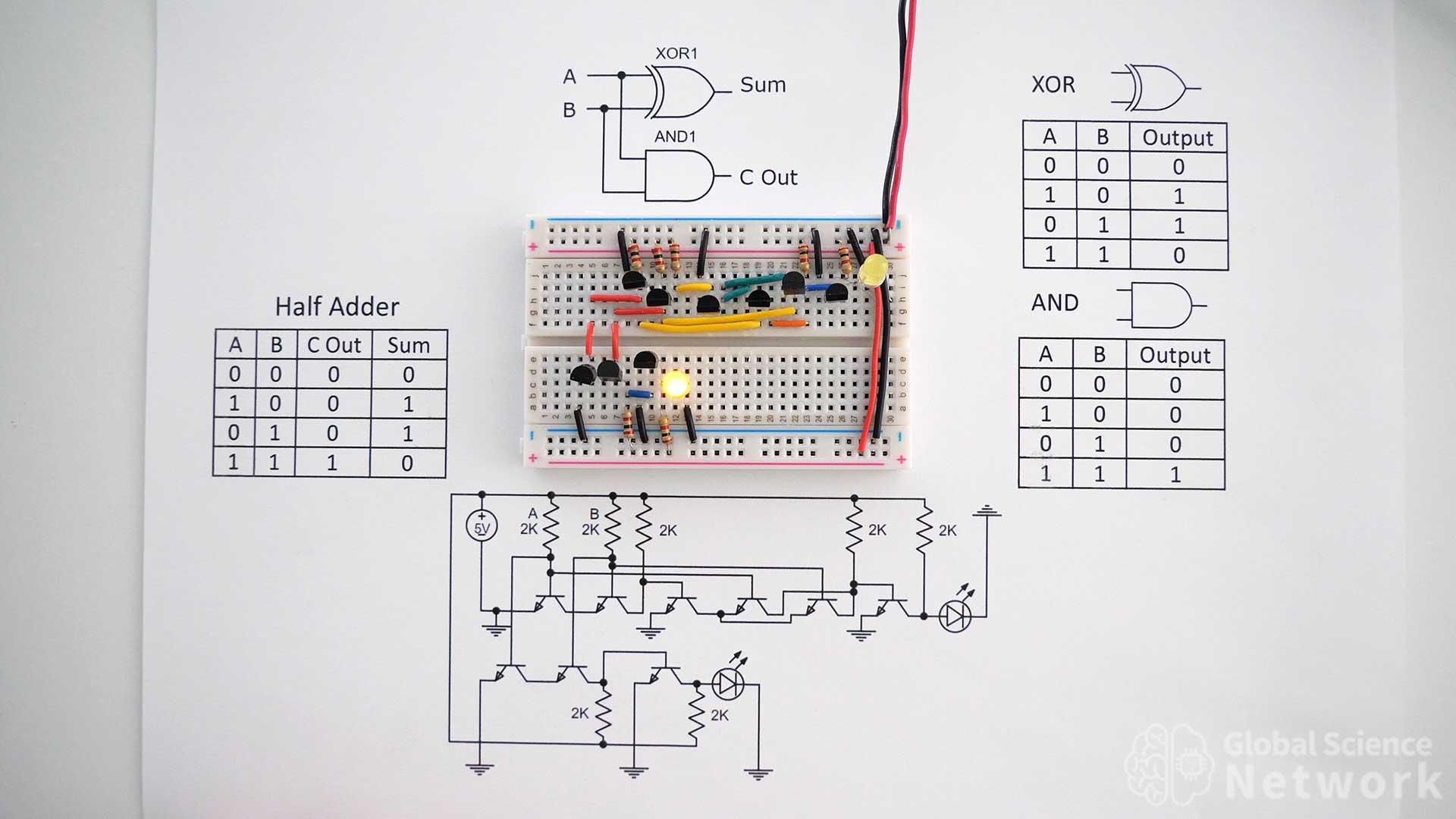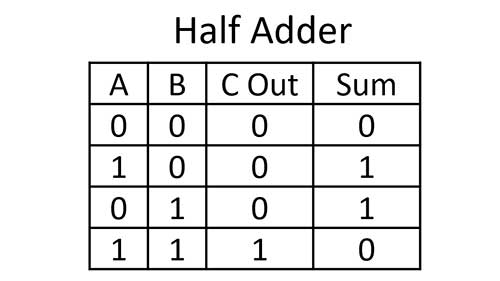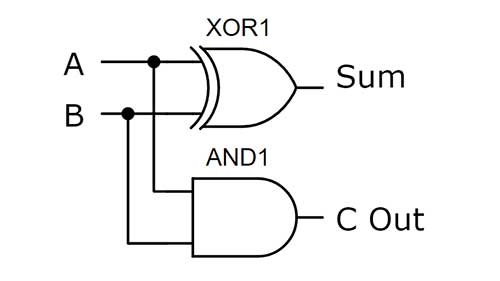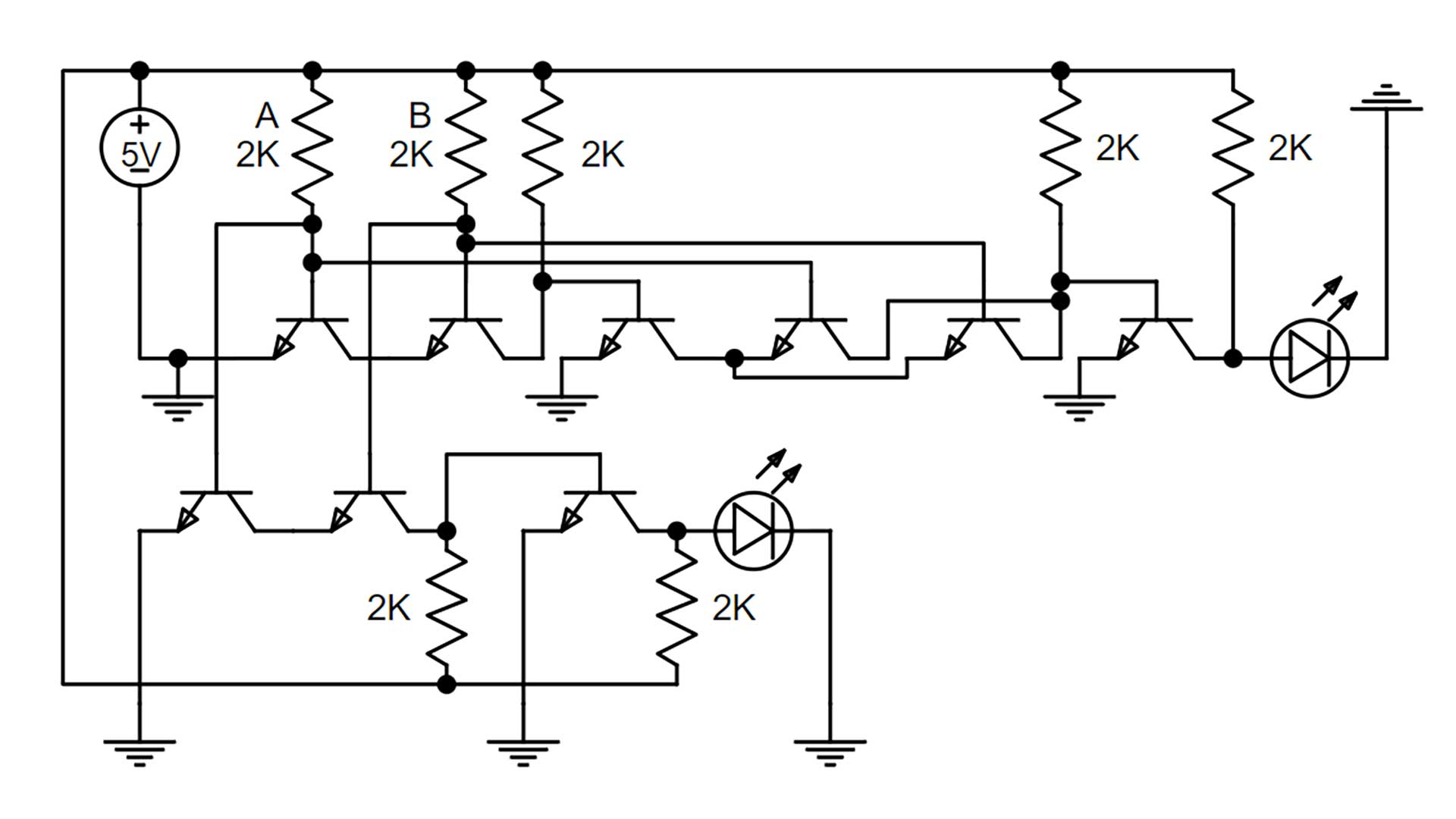A half-adder uses transistors to build logic gates which can be used to add up to the number two. Inputs A and B are the two inputs. These inputs are sent into the XOR gate and to the AND gate. The two output bits are the sum bit and the carry-out bit. This is the simplest way to build a half-adder. The XOR gate and AND gate can also be built using only NAND or NOR gates as well.

The photo above shows a half adder that is built on a breadboard using NPN transistors, 2K resistors, wires, and two LEDs. Power is supplied to the breadboard from a 5-volt battery pack. The two resistors in the upper left-hand corner are inputs A and B. Both the resistors are in place so the inputs are on, the sum bit is off and the carry-out is on. The numbers being added are therefore 1 plus 1 equals 10 which is 2 in binary.
In the video above a half-adder is built and explained. Four different ways to build a full adder are also shown. A half-adder is very limited because it does not have a carry-in location. The full adder has a carry-in slot so multiple full adders can be wired together to add large numbers. While the half-adder can only add two binary numbers so the highest it can count is to the number two.
Half Adder Truth Table

The truth table makes it clear what the output should be based on the inputs. If both inputs are off both outputs are off. When one input is on the sum bit output is on making the output 01 which is one in binary. Finally when both inputs are on the carry-out and the sum bit are on making the output 10 which is two in the base 2 number system.
Half Adder Circuit Diagrams

The logic gate level circuit diagram for the half adder is shown above. This makes it clear where the inputs should go into each logic gate. Both the XOR gate and the AND gate receive inputs A and B. The output of the XOR gate is the sum bit and the output of the AND gate is the carry-out bit.

The transistor-level circuit diagram is a complete wiring diagram for the half-adder. It is clear where each connection should be made. Inputs feed into the base of the transistors, the emitters are connected to the ground in most cases, and the collector side of the transistors sends the outputs. All of the resistor values are 2K however resistor values from 330 ohms to 2.2K will work. Any color LED can be used but yellow works great with the 2K resistors.

Cody started the Global Science Network with the idea people should be focusing more time, energy, and resources on useful projects. He has a bachelor’s degree in aerospace engineering and a master’s degree in mechanical engineering. Cody has worked for the US federal government, a university, a large corporation, small businesses, and for himself. He has done human brain computer interface research and is currently working towards creating non-biological human consciousness.